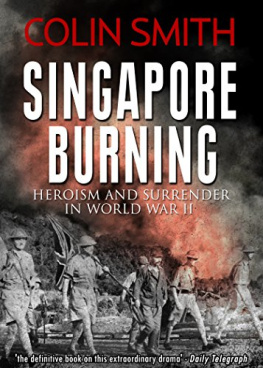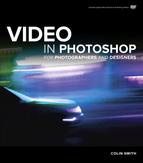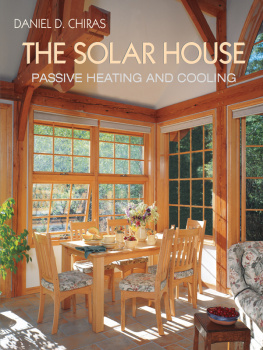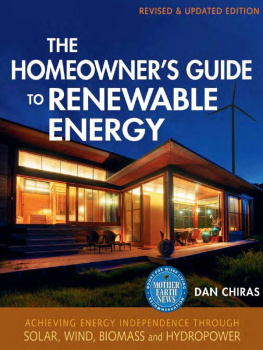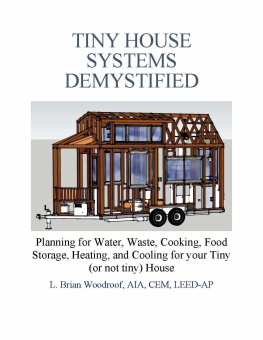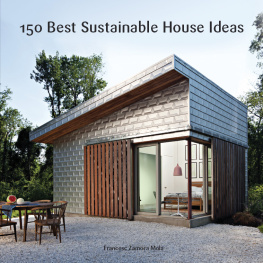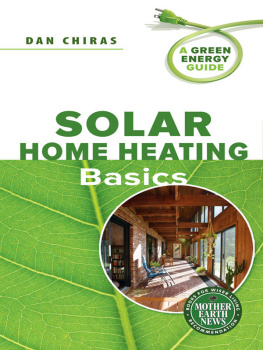This Cold House
THIS COLD HOUSE
The Simple Science of Energy Efficiency
Colin Smith

2007 The Johns Hopkins University Press
All rights reserved. Published 2007
Printed in the United States of America on acid-free paper
9 8 7 6 5 4 3 2 1
The Johns Hopkins University Press
2715 North Charles Street
Baltimore, Maryland 21218-4363
www.press.jhu.edu
Library of Congress Cataloging-in-Publication Data
Smith, Colin, 1942
This cold house : the simple science of energy efficiency / Colin Smith.
p. cm.
Includes index.
ISBN-13: 978-0-8018-8622-5 (hardcover : alk. paper)
ISBN-10: 0-8018-8622-8 (hardcover : alk. paper)
1. DwellingsEnergy conservation. 2. DwellingsHeating and ventilation. I. Title.
TJ163.5.D86S635 2007
697dc22 2006033658
A catalog record for this book is available from the British Library.
Contents
C HAPTER 1 Feeling Good
The Science of Comfort
C HAPTER 2 Save a Dollar, Save the Earth
Effective Insulation
C HAPTER 3 Wrapping Up Warm
Insulating Your Home
C HAPTER 4 Oil or Gas or Electric or
Fuel Choice and Heating Costs
C HAPTER 5 Flickering Flames
The Science of Fires and Fireplaces
C HAPTER 7 The Human Touch
Managing the System
C HAPTER 8 The Crystal Ball
A Look at the Future
Preface
I suppose that all my life Ive been thought of as a bit of an oddball. But that aint so bad here in the UK where I live. We have a strong tradition of eccentricity, honoring our nonconformists, and amusing the rest of the world by our careless antics.
My eccentricity surfaced when I found I was not only good at but thoroughly enjoyed science and math, particularly physics. This was back in the mid-fifties, just as rock and roll surfaced, and Elvis took the world by storm. Even then physics was thought of as a hard subject. Everyone had to study it because it was needed for so many careers, but there was definitely something weird about actually liking it.
In due course I took a physics degree and went on to teach the subject I loved, eventually lecturing at the Manchester Metropolitan University. But not in pure physicsthere are too few students for that these days on this side of the pond. My special interests were to do with energy, especially energy-saving devices used in the home, and this fits nicely into a number of courses.
The second strand of my eccentricity came from my interest in environmental issues. This began in the early seventies just as Greenpeace and Friends of the Earth came on the scene. Although I have never been a member of either, they certainly put environmentalism on everyones agenda, including mine. Some of the predictions made at the time, however, turned out to be spectacularly wrong. I well remember predictions of oil running out in forty years. We are nearly there, and it aint happened yet! But it was this that sparked my interest and concern.
This book combines the two strands of my interests applied to a particular problemthat of how to create warm and comfortable homes from this cold house, in ways that are kind to the earth. But it is not a deep green approach. There are plenty of specialist books that meet this need. No, rather it is my conviction that we can all play a significant part in tackling environmental problemsby each making small, realistic, and achievable adjustments to our lives.
It is my aim to inform your decision making about what to buy and how to use it to keep comfortable in an economic and environmentally friendly way. This is not so much a how-to book as one that helps you make an educated choice about what is needed in your particular circumstances. It could well save you from plunging in and making an unwise investment. It will certainly show how most people can make fuel and cost savings in their homes.
This book is based on my teaching. It is not a textbook, but it is useful as a preliminary reader that effectively supports the more dry academic approach often found in standard texts. Explanations are given in detail and the book is illustrated with a wealth of anecdotes unlikely to be found in a textbook. Think of it as a stimulating companion to such texts for students of subjects such as architecture, building science, home economics, and environmental health.
My writing style may come as a surprisebut I hope it is a pleasant one. Be prepared to be introduced to Grandma, the school janitor, and a whole host of my relatives from before World War II. Their struggle to achieve warmth and comfort in their homes against a background of fuel scarcity and economic deprivation exemplifies many of the points of this book. You may also be surprised to find details of the historical development of much of the equipment available to us. Such detail eases the explanations and forms an interesting backdrop to the workings of the vital but often hidden paraphernalia so essential to our comfort.
I am indebted to Trevor Lipscombe, my editor, for encouraging me to write in this style. I hope that you find the anecdotes and historical detail fascinating and amusing. The intention is that they illustrate points, making the book readable and informative.
Enjoy it!
This Cold House
P ROLOGUE
Finding Your Way
It was through my grandpa that I first became aware of the phrase The good old days. For him, a working-class Brit, those were the early days of the last century. The straight-laced and morose Queen Victoriathe Old Queenhad died, and the fun-loving playboy king Edward VII was on the British throne. It was the heyday of the music hall (from which the variety show later developed). And whats more, you could leave your door unlocked at night, and everyone cared about and generally looked after everyone else. At least that is how my grandfather remembered itthe reality may well have been different.
For me, born in Great Britain in the middle of World War II, my early days were anything but good. One of my earliest memories was of the Great Freeze of 1947, when the snow reached the roofs of houses, and winter seemed to last for ever. To make matters worse, a national fuel shortage sent Dad coal picking around the yards and spoil heaps of our local coal mines.
Indeed, the luxury of all-year-round warmth was not achieved by our family until well into the era of Elvis and the Beatles. Like many others at the time, I grew up to the castanet sound of chattering teeth and slept in a bedroom that felt like the inside of a freezer. There was ice on the windows and we ate huddled around the parlor fire, from where we rarely moved.
Nowadays, warmth and comfort are taken for granted. But when our heating breaks down, the resulting discomfort hits us with a vengeancewe shiver, lose concentration, and generally feel miserable. The effects of thermal discomfort on our bodies are not pleasant.
And thermal discomfort works both ways. Had you been in Dar es Salaam, Tanzania (on the east coast of Africa near the equator), for Christmas 1965, you may well have found me and Gerry, my American Peace Corps buddy, wandering, somewhat aimlessly, around the few air-conditioned shops in the city. Young teachers seeing a bit of the world before we settled down, we both wound up in the same school. Neither he (from Seattle) nor I (from England) had realized just how unbearable the tropics can be at that time of year. I still dont know how we managed to evade heat stroke.
Next page

